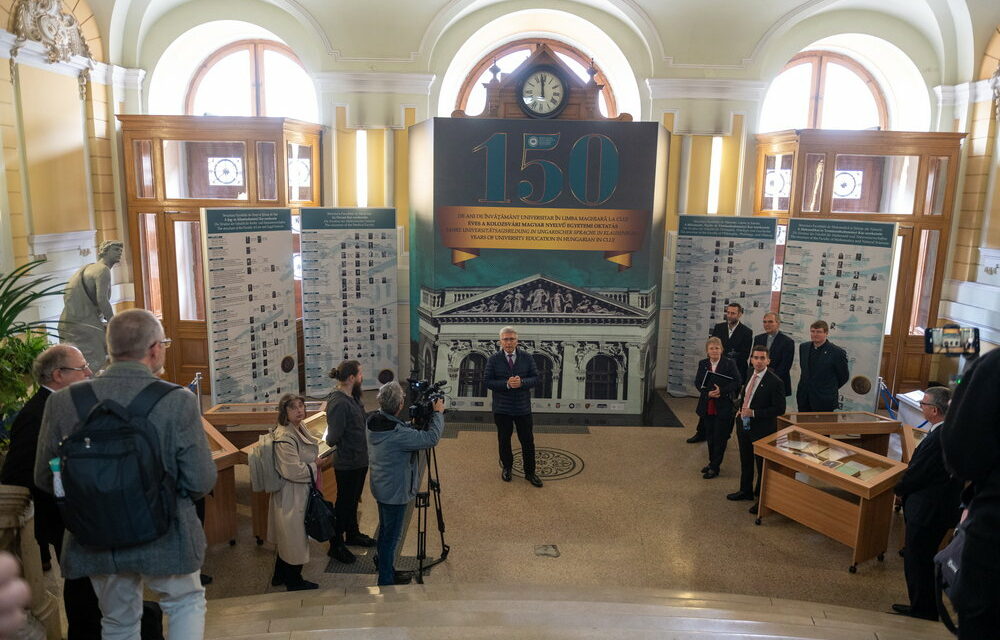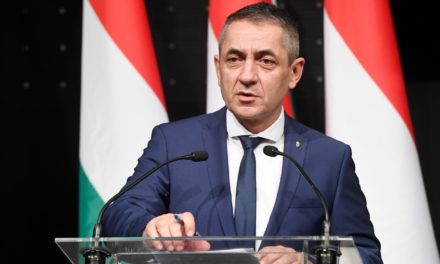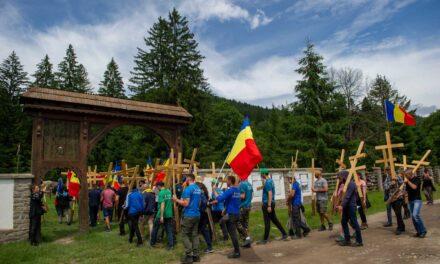Babes-Bolyai University (BBTE) in Cluj-Napoca celebrates the founding of the József Ferenc University in 1872, which is considered the legal predecessor of the university, with a three-day scientific session and exhibition, and university education in Hungarian began in the city 150 years ago.
At the opening of the anniversary events on Wednesday, Rector Daniel David believed that BBTE would not be the Romanian university that attracts the most students, and would not be the best-ranked Romanian higher education institution in international rankings for seven years now, if it were not trilingual and did not combine Hungarian, Romanian and the benefits of German-language education.
"We want the Transylvanian Hungarian community to feel that its academic home is here," declared the rector. He also added that, embedded in Europe, I would like to make the university a home for the Hungarian community.
Daniel David also considered it a good thing that two more Hungarian-language universities were established in Transylvania: the Partium Christian University (PKE) and the Sapientia Transylvanian Hungarian University of Science (EMTE). He considered it important that they complement each other and agree on the higher education needs of the Hungarian community.
Anna Soós, the vice chancellor who heads the Hungarian department, recalled the difficulties of the university's start 150 years ago. He mentioned: the decree of the Emperor and King Ferenc József helped to start the organizational work even before the parliament accepted the law establishing the university. The legislation was finally promulgated by the monarch on October 12, 1872, Áron Berde, the first rector, was appointed on November 10, and the first 258 students began the academic year the following day. He noted: the university had a difficult start, but developed rapidly, 40 years later it already had 2,343 students.
The vice-rector noted: today, more than 6,800 students study in Hungarian at BBTE in 17 faculties, 19 institutes, with the help of 347 full-time teachers and more than a hundred teachers. He believed that excellence at the university is part of the tradition.

Graduation certificate from 1893 in the rector's corridor of the Babes-Bolyai University in Cluj-Napoca at the opening of a temporary exhibition on the occasion of the celebration of 150 years of Hungarian-language university education in Cluj-Napoca on October 12, 2022.
MTI/Gábor Kiss
Poet Béla Markó, former deputy prime minister, who spoke as a former student of the university, said that the 2011 Education Act enabled multicultural universities to provide equal rights to higher education in Romanian, Hungarian and German. BBTE and Marosvásárhely University of Arts applied the law, Marosvásárhely University of Medicine and Pharmacy (MOGYE) has been looking for evaders ever since. "Here, Romanian and Hungarian-language education are not fighting each other, but rather the tight budget and, at times, the lack of university autonomy," said Markó.
Péter Zakar, vice chancellor of the University of Szeged, recalled that he also contributed to the development of the university's infrastructure in Cluj. When the gas plant here resisted modernization, the university professors took a stand in favor of electrification.
"We were both strengthened in the knowledge that not only our past and our traditions are common, but also our future," said the vice-chancellor about the cooperation between the universities of Cluj-Napoca and Szeged. The two universities consider Ferenc József University as their common predecessor because the University of Szeged was founded in 1921 by teachers from Cluj who fled Transylvania after Trianon.
An exhibition was organized at the university for the anniversary, which presents the scientific works of the early days, the university's insignia and seal printers. The bust of József Ferenc from the Cluj Museum of Art, which was presented to the university by the emperor himself in 1895 and which is believed to be the work of János Fadrusz, was also brought to the university for the exhibition.
The current BBTE was resettled during the Second World War, following the Second Vienna Decision, and was later established by a Romanian royal decree as a Hungarian-language university (taking the name of János Bólyai from 1945) and after the war returned to Cluj-Napoca as a Romanian-language university (from 1947 after the name of Victor Babes was established by the 1959 merger of the receiving) university of science ordered by the Romanian communist authorities.
MTI
Front page photo: József Lukács, a research associate at the Museum of University History at the Babes-Bolyai University of Cluj-Napoca, presents the temporary exhibition opened in the main building of the university on the occasion of the celebration of 150 years of Hungarian-language university education in Cluj-Napoca on October 12, 2022. MTI/Gábor Kiss












